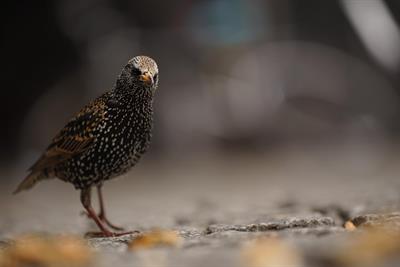PDF chapter test TRY NOW
The next year his science fair project was testing the theory that viceroy butterflies copy monarchs. The theory was that viceroys look like monarchs because monarchs don’t taste good to birds. Viceroys, on the other hand, do taste good to birds. So the more they look like monarchs, the less likely they are to become a bird’s dinner.
Ebright’s project was to see whether, in fact, birds would eat monarchs. He found that a starling would not eat ordinary bird food. It would eat all the monarchs it could get. (Ebright said later research by other people showed that viceroys probably do copy the monarch.) This project was placed first in the zoology division and third overall in the county science fair.
In his second year in high school, Richard Ebright began the research that led to his discovery of an unknown insect hormone. lndirectly, it also led to his new theory on the life of cells.
The question he tried to answer was simple: What is the purpose of the twelve tiny gold spots on a monarch pupa?
Explanation:
Ebright then experimented with the notion that viceroy butterflies imitate monarch butterflies for the following year. He proposed that viceroy butterflies resemble monarch butterflies because monarch butterflies do not taste well to birds, whereas viceroy butterflies are tasty to birds. As a result, the more the viceroy looked like the monarch, the less likely a bird devoured them.
Ebright sought to demonstrate whether a bird would eat monarch butterflies or not in his project. He discovered that the starling (a common bird with dark brown or black feathers that dwells in major groups in different parts of the world) would not eat the butterflies that ordinary birds eat. For instance, ordinary birds prefer to eat viceroy. Meanwhile, starling prefers to eat monarch butterflies. In addition to that, the starling birds would eat the maximum number of monarch prey they get. Later it was revealed that the viceroys imitated the monarchs. This project earned him first place in the Zoology department and third place overall in the county science fair.
Ebright sought to demonstrate whether a bird would eat monarch butterflies or not in his project. He discovered that the starling (a common bird with dark brown or black feathers that dwells in major groups in different parts of the world) would not eat the butterflies that ordinary birds eat. For instance, ordinary birds prefer to eat viceroy. Meanwhile, starling prefers to eat monarch butterflies. In addition to that, the starling birds would eat the maximum number of monarch prey they get. Later it was revealed that the viceroys imitated the monarchs. This project earned him first place in the Zoology department and third place overall in the county science fair.

Starling
Ebright began a study project during his second year of high school. He discovered an unknown insect hormone that subsequently assisted him in developing his new theory regarding cell life. The question he was attempting to answer was simple and clear. He asked what the purpose of the 12 small gold dots on a monarch pupa was? This opens the doorway to a world of scientific discovery for him.
Meanings of the difficult words:
| S.No | Words | Meanings |
1 | Starling | A common bird with black or dark brown feathers that lives in large groups in many parts of the world |
2 | Hormone | Any of various chemicals made by living cells that influence the development, growth, sex, etc. of an animal and are carried around the body in the blood |
3 | Discovery | The process of finding information, a place, or an object, especially for the first time, or the thing that is found |
Reference:
National Council of Educational Research and Training (2007). The Making of a Scientist- Robert W. Peterson(pp. 32-38). Published at the Publication Division by the Secretary, National Council of Educational Research and Training, Sri Aurobindo Marg, New Delhi.
